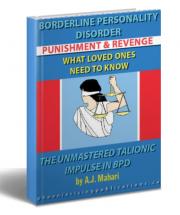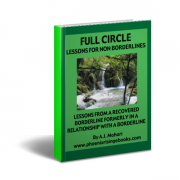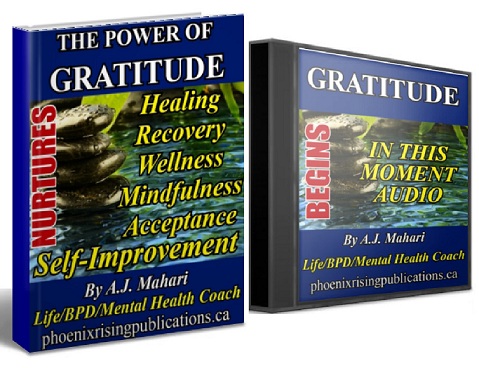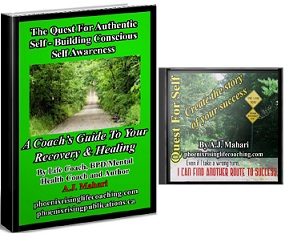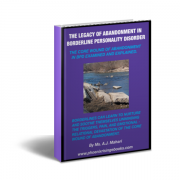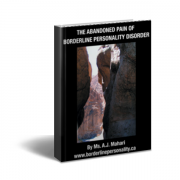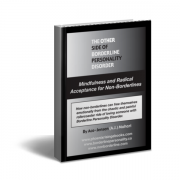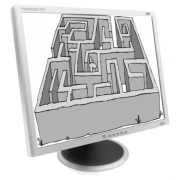BPD and PTSD
The reality that PTSD is often co-morbid with Borderline Personality Disorder is discussed. With the symptoms of PTSD outlined and some examples of how I have been able to recover.
Borderline Personality Disorder (BPD) and Post Traumatic Stress Disorder (PTSD) can and often do overlap. There is a high incidence of those diagnosed with BPD also having PTSD.
Post Traumatic Stress Disorder is an enduring consequence of a traumatic experience or a series of traumatic experiences. Many associate PTSD with war vetrans and accident victims or the victims of very violent crimes (all of which can also be causes). PTSD, in a high number of instances is often the result of abuse and neglect.
A National Center for PTSD Fact Sheet explains:
Post-Traumatic Stress Disorder, or PTSD, is a psychiatric disorder that can occur following the experience or witnessing of life-threatening events such as military combat, natural disasters, terrorist incidents, serious accidents, or violent personal assaults like rape [childhood sexual abuse]. People who suffer from PTSD often re-live the experience through nightmares and flashbacks, have difficulty sleeping, and feel detached or estranged, and these symptoms can be severe enough and last long enough to significantly impair the personís daily life.
PTSD is marked by clear biological changes as well as psychological symptoms. PTSD is complicated by the fact that it frequently occurs in conjunction with related disorders such as depression, substance abuse, problems of memory and cognition, and other problems of physical and mental health. The disorder is also associated with impairment of the personís ability to function in social or family life, including occupational instability, marital problems and divorces, family discord, and difficulties in parenting.
"Who is Most Likely to Develop PTSD?"
1. "Those who experience greater stressor magnitude and intensity, unpredictability, uncontrollability , sexual (as opposed to nonsexual) victimization, real or perceived responsibility, and betrayal. 2. Those with prior vulnerability factors such as genetics, early age of onset and longer- lasting childhood trauma, lack of functional social support, and concurrent stressful life events. 3. Those who report greater perceived threat or danger, suffering or being upset, terror, and horror or fear. 4. Those with a social environment which produces shame, guilt, stigmatization, or self-hatred."
Source Quoted for PTSD facts The National Center For Post Traumatic Stress Disorder.
"Symptoms of PTSD include, but are not limited to:"
"Recurrent, intrusive, and distressing thoughts about the event Recurrent dreams, nightmares (sometimes called "night-terrors") about the event Flashbacks (a sense of reliving the event) Distress caused by reminders of the event (sights, sounds, smells) Alienation, isolation, and avoidance of people and places Emotional numbing No sense of future Survivor guilt (for having survived when others did not, or for behavior required for survival) Difficulty falling or staying asleep Anger and rage Difficulty concentrating or remembering Hyper-vigilant, or survivalist behavior Exaggerated startled response (usually to loud noises) *These symptoms may lead to substance abuse or other self-destructive addictive behavior.*"
Source for the Symptoms of PTSD The American Legion Guide To: Post Traumatic Stress Disorder
Borderline Personality disorder in many ways can be compared to having a cognitive-emotional (often fear/panic) button stuck in the "ON" position. Many borderlines are very much stuck in hyper-vigilant, "survivalist behavior" and often not without knowing why. In this state of hyper-awareness (which is a narcissistic - defense) a borderline (with PTSD) is always on guard. He/she is always on the lookout for that person, thing, comment, or word that will hurt them. Often when something does hurt, or frighten them they do not know why. Much of the borderline experience carries with it differing levels of dissociation. This means that borderlines often experience things in the present as if they were things in the past. A sudden loud noise outside, for example, which likely has no consequence in the borderline's life, in the present, will be perceived as a threat. The borderline (with PTSD) will have to investigate it and then often will ruminate on what could have happened or may still happen, the what-if's of the noise and it's potential ramifications. This can be "crazy-making". The excessive focus on that loud noise, for example, causes even more distress (sometimes could trigger anger/rage) than the noise itself did in the first place. This focus and or concern is generally not well received or well understood by those around the borderline with PTSD.
Although I was diagnosed with BPD at the age of 19 and recovered from it in my mid 30's I was not aware that I also had PTSD until well after that. I am now 43 and it has just been in the last 4 years that I have come to know that some of what I still experience is in fact PTSD. Not to say that this will be everyone's experience, but, in my case, I had to heal the BPD before I could even begin to address the PTSD. PTSD can mimic BPD in that it can leave you feeling "similar things", focusing excessively on perceived threats and or experiencing things in fragmented ways.
I would recommend that anyone with BPD follow up with their therapist as to whether or not they may also have PTSD. There are many causative factors associated with both that overlap.
The further we move away from our pasts the more we may tend to trivialize our pasts. As we get older, heal more and recover functionality in our lives perhaps things don't seem "that bad" anymore. However, it is important to remember that we suffered as children, was experienced very differently by us then than it is by us in later years as we re-live it (flashbacks) and or go back over it in therapy.
In fact if you look at the list of symptoms above it would be quite easy to just change the wording a little bit and you would end up with the very way that the criteria for BPD is explained. BPD Defined
There are no easy answers. Recovery takes time. You may, as I had to have to recover from the BPD in order to gain enough awareness, insight and understanding into yourself (establish your true identity) in order to be able to then begin to deal effectively with the PTSD.
Things that helped me were:
cognitive re-training re-living the feelings and thoughts and catching myself in the thought loops that would just continue to produce, emphasize and or make worse my thoughts and feelings based on my past and not my here and now learning to differentiate between then and now realizing that the most uncomfortable and or terrorizing thoughts/feelings you may experience are the BPD/PTSD working it's way into your consciuosness so that you can heal by being willing to face my pain and my triggers sitting with the pain and the thoughts that can be triggered and being gentle with myself until they pass learning not to degrade myself or think of myself negatively or as crazy when facing that pain or those triggers learning to re-focus and do implement other (healthy) activities where I would dwell on the past before learning that I did not have to ruminate on the thoughts/worries which I had excessively focused on for years and finding their source in therapy and then learning to cope with and manage symptoms until I have been or am ready to let them go I learned that I did not have to be hypervigilant in order to be safe
As with many other mental disorders, PTSD often overlaps or is co-morbid with BPD. Getting to the bottom of the puzzle that BPD presents you in your life may well mean being tested, diagnosed and treated for other presenting disorders. Do not try to categorize yourself. Let a professional assess you.
As word of encouragement here I have found PTSD very formidable but nowhere near as formidalbe as I found BPD. Once you establish your identity and understand BPD you will find renewed energy and desire to deal with any other diagnosis that may also exist in your case, along with the BPD.
Validate yourself. Believe in yourself. Seek and be consistent in your seeking treatment. Want to get well. Know that you can get well. You are the writer of the book that is your life.
© Ms. A.J. Mahari - January 21, 2001






